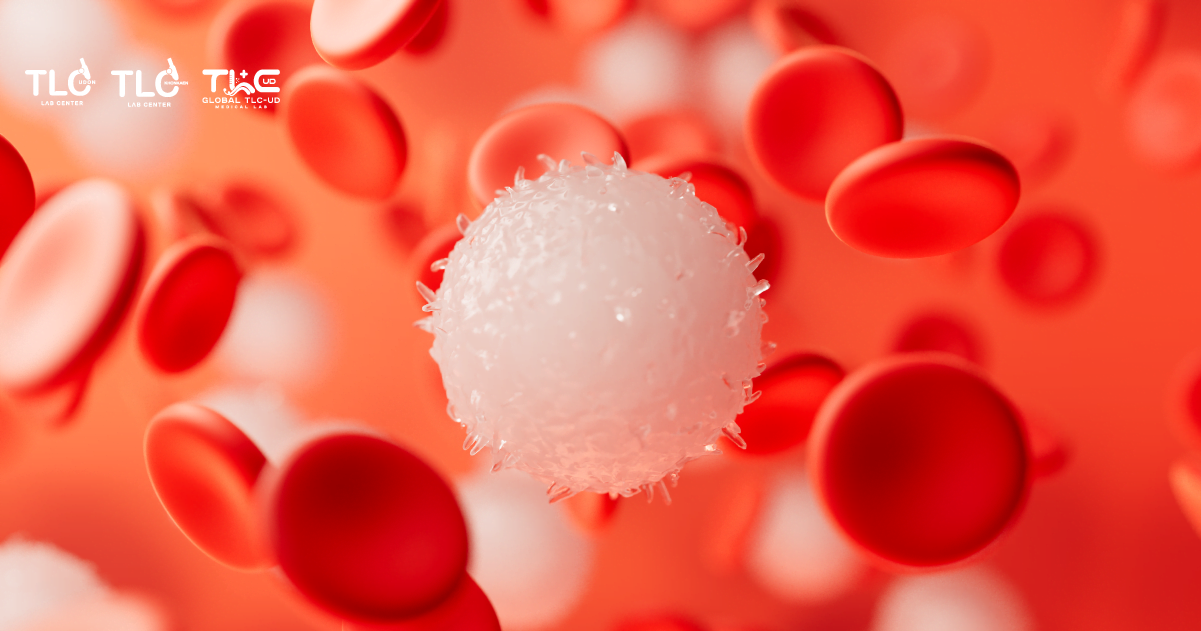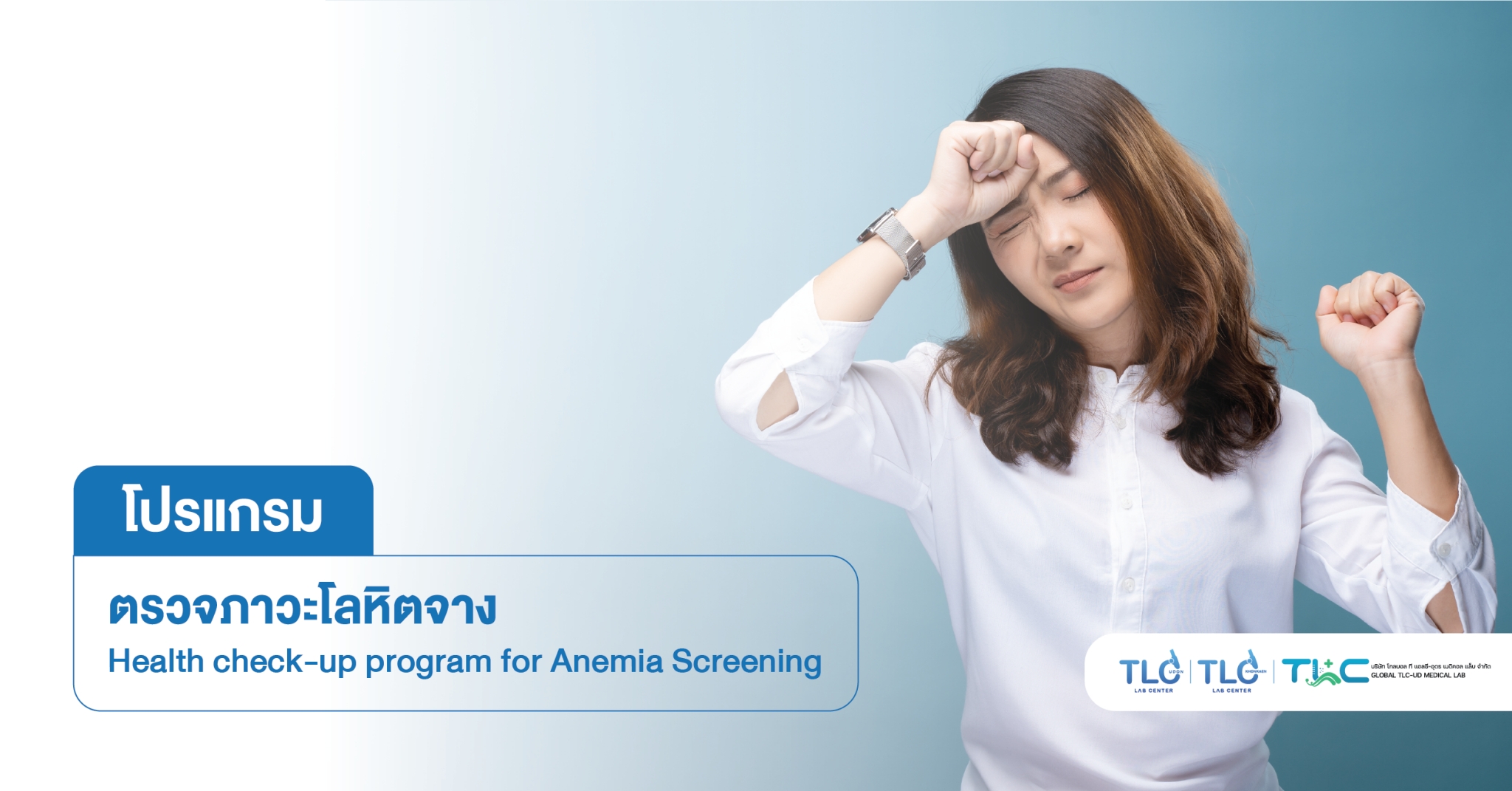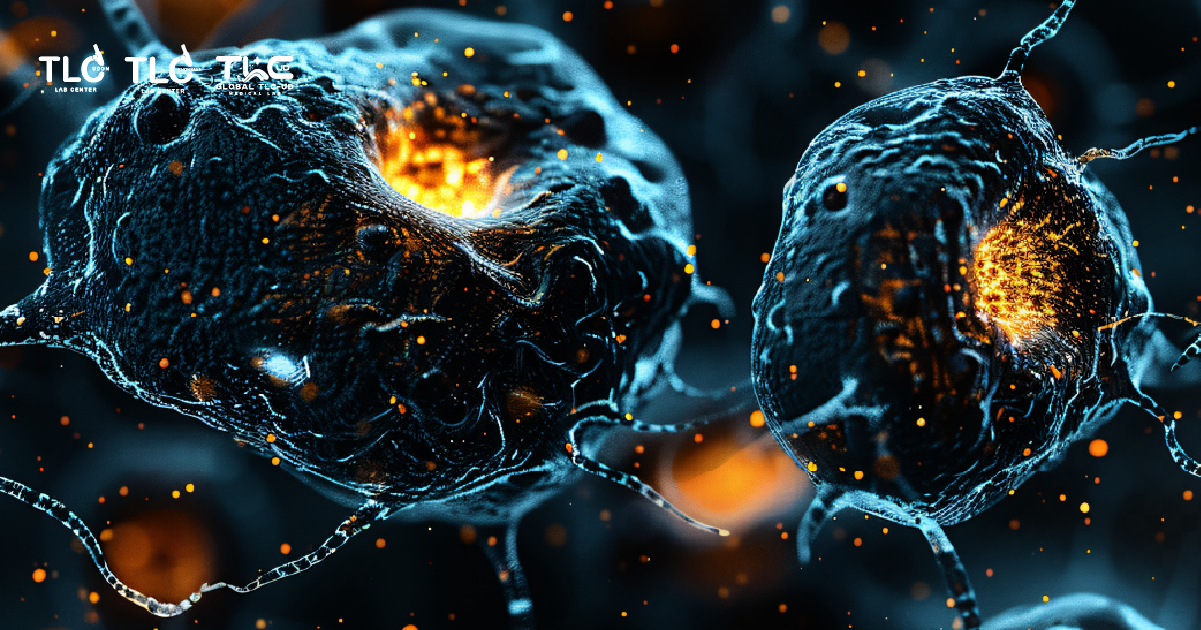White blood cell (WBC or Leukocyte) are blood cells that are responsible for resisting germs and foreign substances that enter the body. White blood cells are made from bone marrow like red blood cells, but they are larger than red blood cells and are less abundant. There are many types of white blood cells, each of which has a different function against each germ. A blood integrity test provides information about the number and type of white blood cells of a patient or person being tested.
The interpretation of the various parameters of leukocytes is as follows:
White blood cell count (WBC count)
White blood cell count (WBC count or Total white blood cell or Total WBC) This is the amount of white blood cells counted from the blood sample of the person being tested.
* The reference range is about 4,500 – 11,000 cells/mm3 (some laboratories may report it in cells/microliter, which is equivalent to cell/mm3).
If the WBC count is low, we call it leukopenia, which can be caused by many reasons, such as:
- Bone marrow damage
- Bone marrow disorder
- Autoimmune condition
- Severe bloodstream infection (sepsis)
- Dietary insufficiency
- Lymphoma or other cancers that spread to bone marrow
- Diseases that cause immunodeficiency, such as HIV infection, etc.
If the WBC count is high, we call it leucocytosis, which is usually caused by inflammation and infection in the body or abnormalities in the bone marrow. Possible causes of hyperleukemia include:
- The most common infection in the body is bacterial or viral infection, which causes the body to produce more white blood cells to deal with pathogens.
- Inflammation, leukaemia, or myeloproliferative disorder that causes the bone marrow to produce an abnormally large number of white blood cells.
- Allergy and asthma
- Tissue death such as burns, concussions, myocardial infarction.
- Intense exercise
- Severe stress, etc.

White blood cell differential (WBC differential)
White blood cell differential (WBC differential or Diff) is a test of the number of each type of white blood cell because each type of white blood cell has a different function against pathogens. The leukocyte classification test may be reported as a proportion of each type of leukocyte to the total number of leukocytes (reported in %) or as the amount of each type of leukocyte (reported in cells/mm3), or both. The types of leukocytes that can be classified are as follows:
Neutrophil Neutrophils (N) are the most abundant type of leukocyte. Neutrophils are like the first line of defence of the immune system that is responsible for catching and eating germs. When neutrophils die, they turn into pus.
* The reference range of this type of leukocyte is 40 – 80 % or about 2,000 – 7,000 cells/mm3.
The level of neutrophil leukocytes can be higher than normal for a number of reasons, such as:
- Inflammation of the body
- Acute bacterial infection
- Tissue death such as burns, concussions, myocardial infarction.
- Intense exercise
- Severe stress
- Certain types of leukaemia, such as chronic myeloid leukaemia (CML)
- Cushing’s syndrome, etc.
Lymphocyte Lymphocytes (L) are white blood cells that mainly function against viruses.This type of lymphocute is classified into 3 subtypes such as.
- B cell: It is responsible for the production of antibodies, which are substances that bind to pathogens.
- T cell: It acts to eliminate pathogens by the cell-mediated immunity system.
- Natural killer cell (or NK cell): Eliminates infected cells with viruses and cancer cells by stimulating cells (similar to T cells). It is the sum of the three subtypes of lymphocyte leukocytes combined.
* The reference range of lymphocytes is 20 – 40 % or about 1,000 – 3,000 cells/mm3.
Reasons why lymphocyte levels are higher than usual include:
- Acute viral infections such as chickenpox, herpes, measles, etc.
- Certain bacterial infections such as diphtheria, tuberculosis, etc.
- Toxoplasmosis
- Chronic inflammation
- Lymphocytic leukaemia
- Lymphoma
- Stress, etc.

Monocytes (M) are white blood cells that are responsible for eating pathogens and can also remember the characteristics of pathogens. It is usually found in small amounts in the bloodstream. Monocytes, when moving from the bloodstream into tissues, develop into cells called macrophages.
* The reference range for monocytes is 2 – 10 % or about 200 – 1,000 cells/mm3.
Reasons why this type of white blood cell level is higher than normal include:
- Chronic infections such as fungus, tuberculosis,
- Bacterial endocarditis
- Collagen vascular disease such as lupus, scleroderma, rheumatoid arthritis, vasculitis.
- Monocytic leukaemia or Myelomonocytic leukaemia, etc.
Eosinophils (E) are a type of white blood cell primarily involved in combating parasitic infections. They also play a role in allergic reactions and inflammation by releasing various chemicals, including cytokines and enzymes. Eosinophils are typically present in the bloodstream in small quantities.
* The reference range for this type of leukocyte is 1 – 6 % or about 20 – 500 cells/mm3.
Reasons why this type of white blood cell level is higher than normal include:
- Allergy-related diseases such as asthma, allergic rhinitis, atopic dermatitis.
- Drug reaction
- Parasitic infection
- Leukaemia or lymphoma
- Chronic inflammatory conditions such as inflammatory bowel disease, etc.
Basophil (B) is a white blood cell that plays a role in inflammation and inflammation.
Allergies as well as eosinophilic leukocytes. Basophil is usually found in small amounts in the bloodstream. If it is in the tissue, it is called a mast cell, which has the same appearance and function. Basophil leukocytes can release a chemical called histamine, which plays a significant role in the process of anaphylaxis and allergy in the body.
* The reference range of this type of leukocytes is < 1 – 2 % or about 20 – 1,000 cells/mm3.
The reasons why this type of white blood cell has higher levels than normal are:
- Food allergy
- Urticaria
- Chronic inflammatory conditions such as inflammatory bowel disease, rheumatoid arthritis
- Certain types of leukaemia, etc.

















